The wonderful thing about the car community is that even in the toughest of times it will rally together and find a way to help those in need. Whether at the roadside or during a DIY restoration project, a friendly face and helping hand is never that far away. Yet even by the standards of our great community, the story of how a 1957 Volvo PV445 Duett went from a wild-fire-ravaged wreck to a working family heirloom once again is heartwarming.
In the spirit of the season, I’d even argue we should all be thankful for this car, not because Duetts are significant (as the original Volvo estate car, they are) or fast (with 60 or 80bhp, depending on the engine size, they’re not), but because of what this car exemplifies, seemingly against the odds, in this year of years. It has a good, pure, honest, friendly, bend-over-backwards, full-of-love story arc that every so often enters our wonderful old-car sphere.

Back in early November 2018, Pam Kirby’s son Cameron didn’t have much work left to get his late grandfather’s old Volvo Duett back on the road. It had broken down several years earlier and remained inoperable, but the young mechanic had previously towed it about 90 miles north from Sacramento to his home in Paradise, California, where he could get it sorted for Pam, who had inherited the car from her father.
Now that he had the fuel tank repaired, Cameron just needed to install it. In the meantime, the tank sat on the Volvo’s bonnet until he could find a moment to complete the job. The morning of 8 November would change everything.
Camp Fire, which would kill 85 people and become California’s most destructive wildfire on record, tore through the Sierra Nevada foothills and decimated Paradise in a matter of hours. In the heat of the moment, Cameron debated hooking up the Volvo and towing it out of danger, but there was no time, so he fled. “He made it out with his life and his dog and a few things he could throw in his truck,” Kirby says.
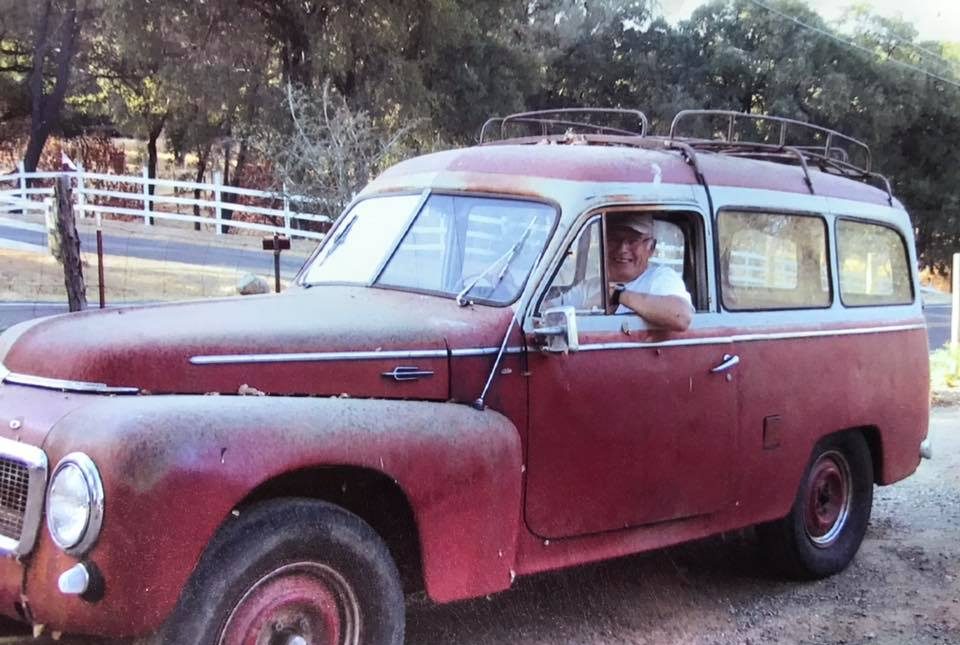
In the fire’s aftermath, Paradise residents weren’t immediately allowed back to their properties. “But my husband has a friend, a magazine photographer,” Kirby says, “and he called to tell us he’d been assigned to go shoot in Paradise.” He offered to check on the property for Cameron. “It was because of him we knew very early how bad the damage was, that the house was gone, that everything was gone.”
The Volvo, too, was gone. The fire had eaten its paint and warped the sheetmetal beneath it. All the glass, plastic, and thin metal melted. The car sagged on coil springs fully compressed, and the interior was gutted save for the seat frames and singed springs that no longer had much spring to them.
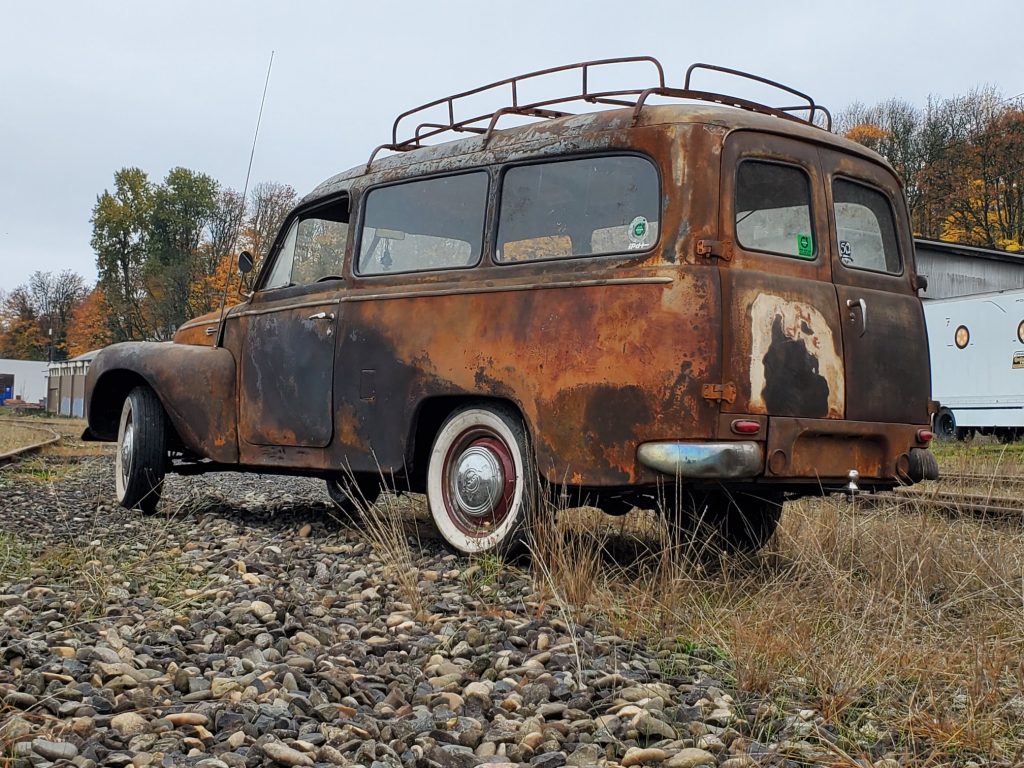
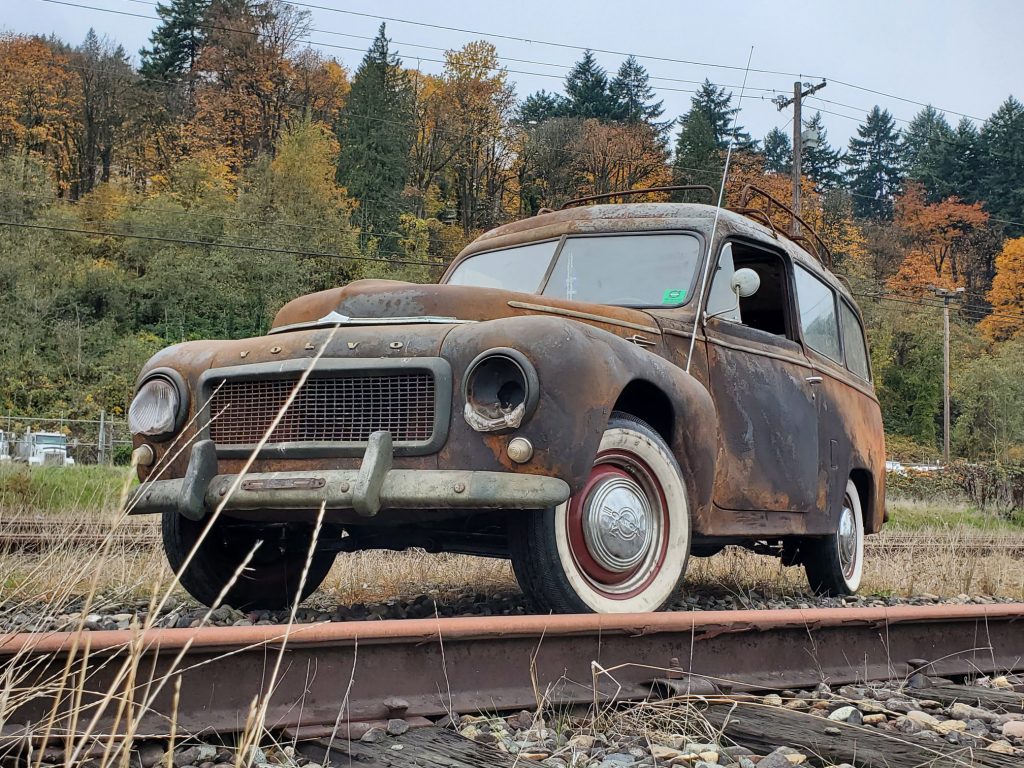
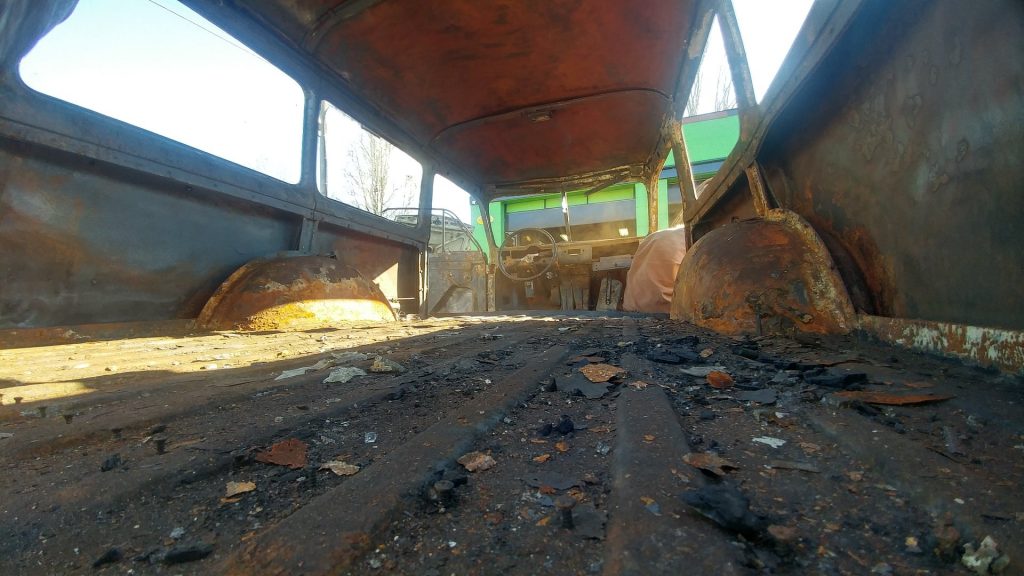
“I was so heartbroken to lose my dad’s car,” Pam Kirby says. “I grew up in that car. I was a toddler camping in it. I learned to drive in it, and I drove it in high school. It’s been in my life for forever.” In the weeks after the fire, though, she recognised there wasn’t anything she or her family could do for it. She also knew she couldn’t bear to send it to the scrapyard. In January 2019 she joined several Volvo groups on Facebook. “I posted pictures and asked if anyone could take it on. Three people responded.”
One of them was Nick Haas, who runs Red Block Performance, a Volvo specialist in Portland, Oregon. Haas was fixing up his own Volvo Duett at the time and was initially interested in the Kirby’s solely for what he might scavenge from it. Then he and Pam Kirby spoke on the phone.
“I spoke with her and saw how much she loved her father. I saw how much this car meant to her, and I knew I had to try to get it back on the road,” Haas says. “This Volvo was so important to their family, and I wanted to make sure it didn’t just die in vain.” Kirby still had not been back to her son’s property since the fire, still had not seen the Duett, but she suggested Haas collect it.
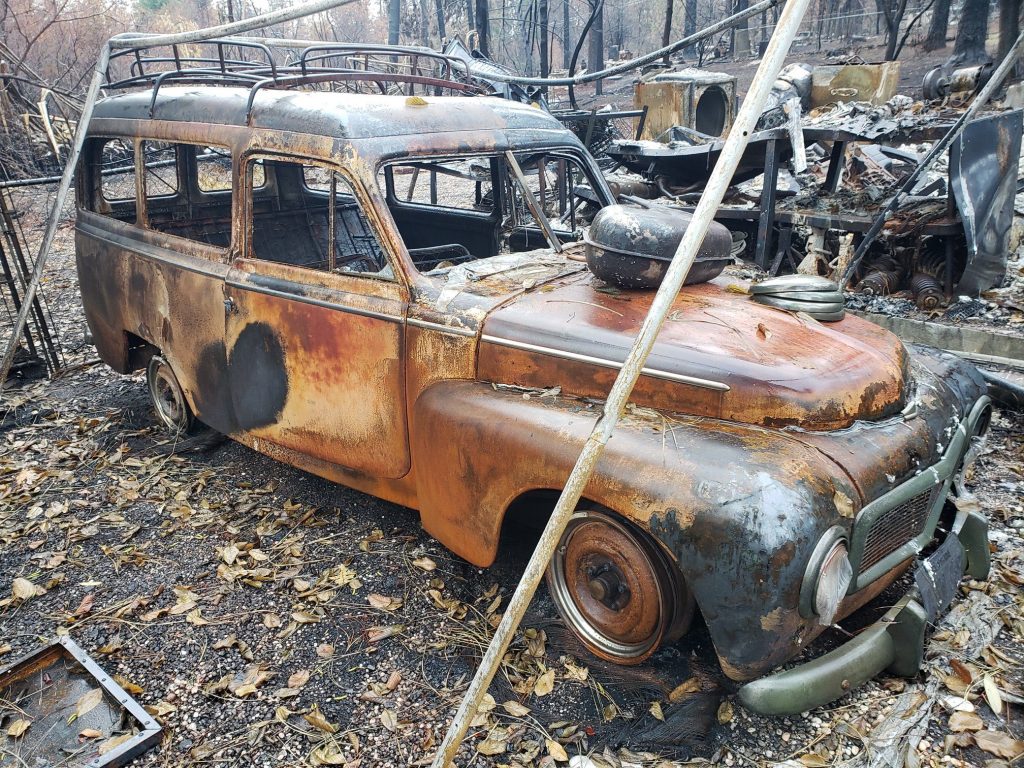
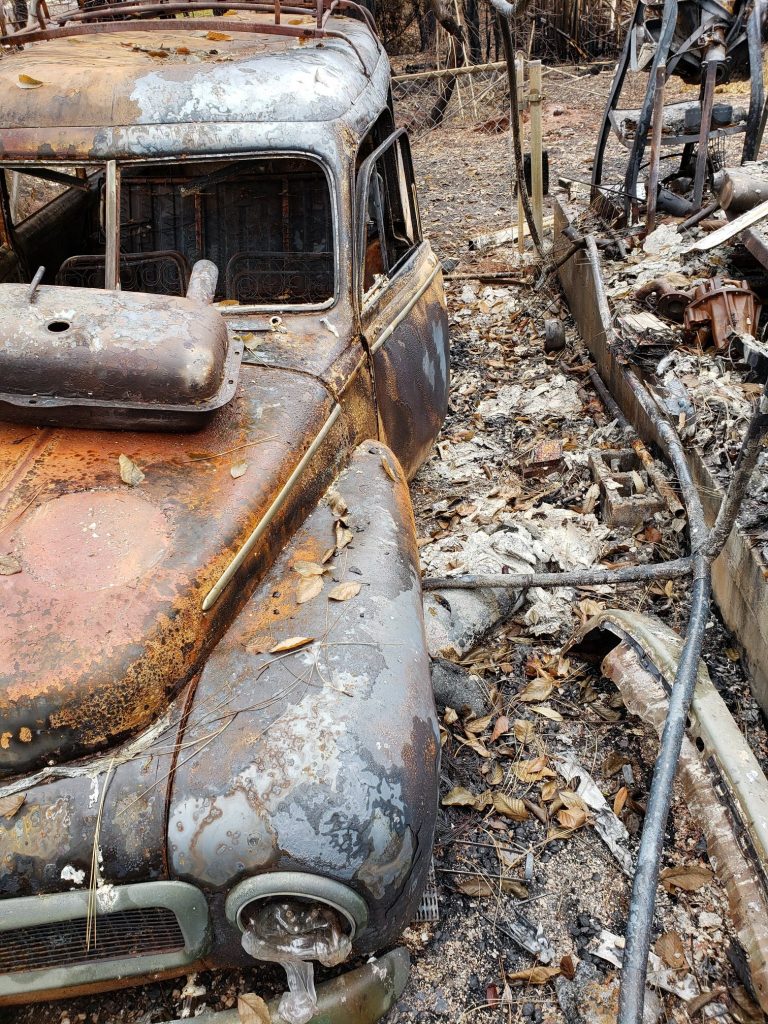
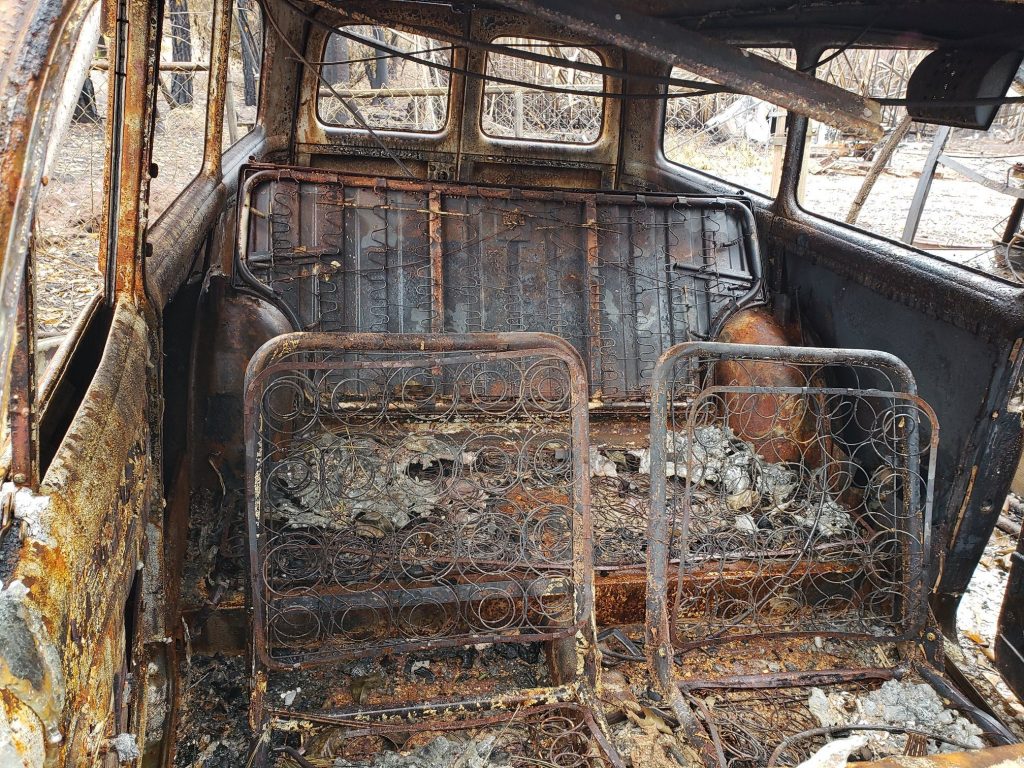
Haas drove down to California towing a trailer. “When I arrived in Paradise that January, I was surprised by the devastation,” he says. “I came to this hillside covered in crosses and had to pull over and regain my composure. Even just seeing the car and pulling it out of the ashes, it was heart-wrenching.”
Back in Portland, Haas spent two months stripping the car down, grinding and wire-wheeling it to bare metal. He then coated everything underneath with POR-15 rust converter before painting it all with a rust-inhibiting heavy-equipment enamel. “I wanted to preserve everything you don’t see,” he says. “But I tried to leave the exterior and exposed parts as close to as-found as possible.”
Most of those “as-found” bits get regular treatments of boiled linseed oil to keep rust at bay. Rain will kill this car as fire could not, so for the rest of its days, the Duett will need to lead a charmed life, ideally garaged, in a warm, dry climate.
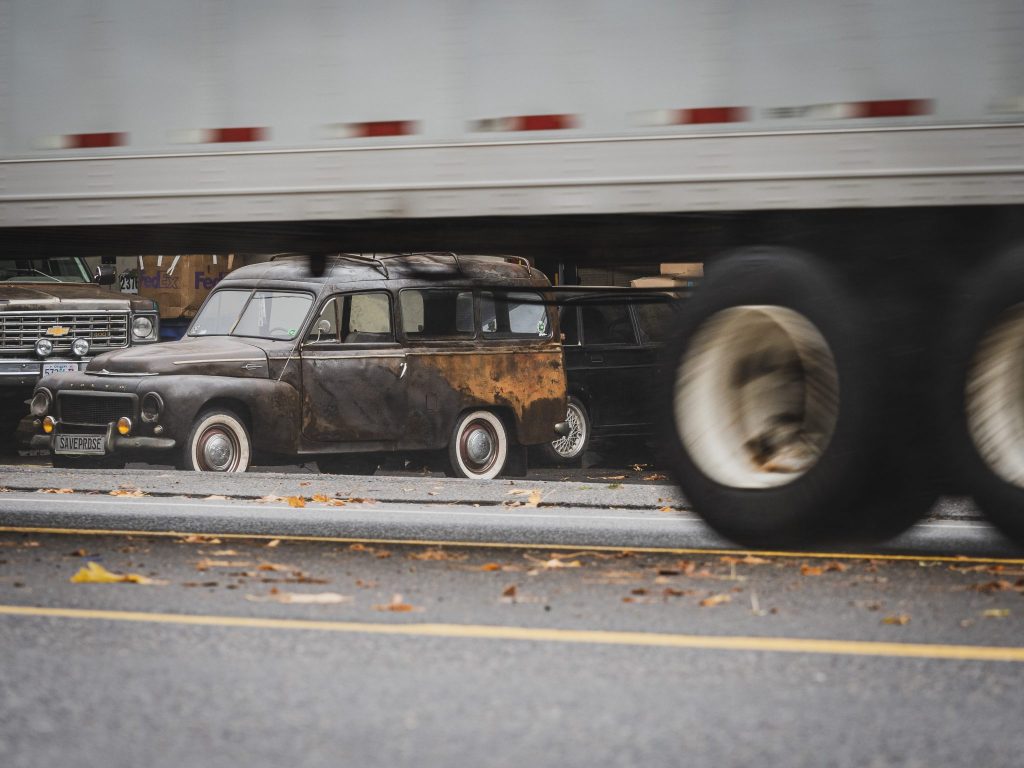
As he dug into the Volvo, Haas also got a glimpse into the Volvo-owning life of Lee Pearce, Pam Kirby’s father, who had purchased the Duett new in Sacramento from John’s Motor Sales. He proved a meticulous record keeper.
“The car came with a five-inch stack of receipts, dealership brochures, a Sears parts catalog, Lee’s notes and calculations for various things, and an original Volvo Duett shop manual with his notations,” says Haas. All of it was pristine, too – no tears, no creases, nothing faded. In fact, Lee Pearce turned out to be a true “Volvo guy,” having owned several models during his lifetime. In 1970, after an accident destroyed his 145 wagon, Pearce took it and the Duett to the high school where he taught mechanical engineering, and he and his students replaced the latter’s 85bhp, 1.6-litre four-cylinder B16 and three-speed manual with the larger 101bhp B18 and four-speed from the 145.
Surprisingly, or perhaps not, Haas didn’t have to open that engine. “Didn’t even replace the head gasket,” he says. “Fire so hot it melted the glass and warped just about everything else, but that motor still runs fine.” Bear in mind the B18 is the same engine that powered a world-famous Volvo P1800, owned by Irv Gordon, for more than 3 million miles. “You can’t kill these engines. You just can’t,” laughs Haas.
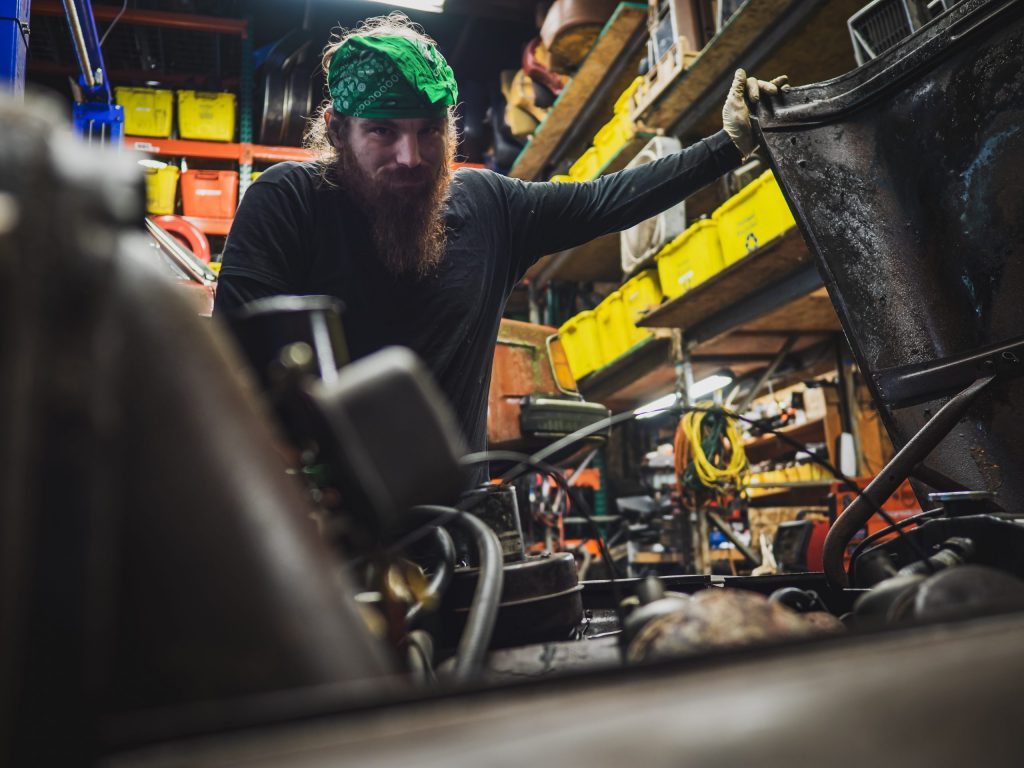
Haas didn’t touch the engine, but the interior certainly needed help. When he put a post on Facebook looking for parts to restore the car, the Volvo community delivered. A fellow enthusiast in Lebanon, Oregon, donated the steering wheel and the taillights. A family in Reedsport, Oregon allowed Haas to camp on their property for a long weekend and mine their six Duetts for parts. The instrument cluster was donated by a Volvo collector in France. The temperature gauge – “new old stock and totally unobtanium” – came as a donation from someone in Germany. “There are parts on this car from all over the place,” Haas says.
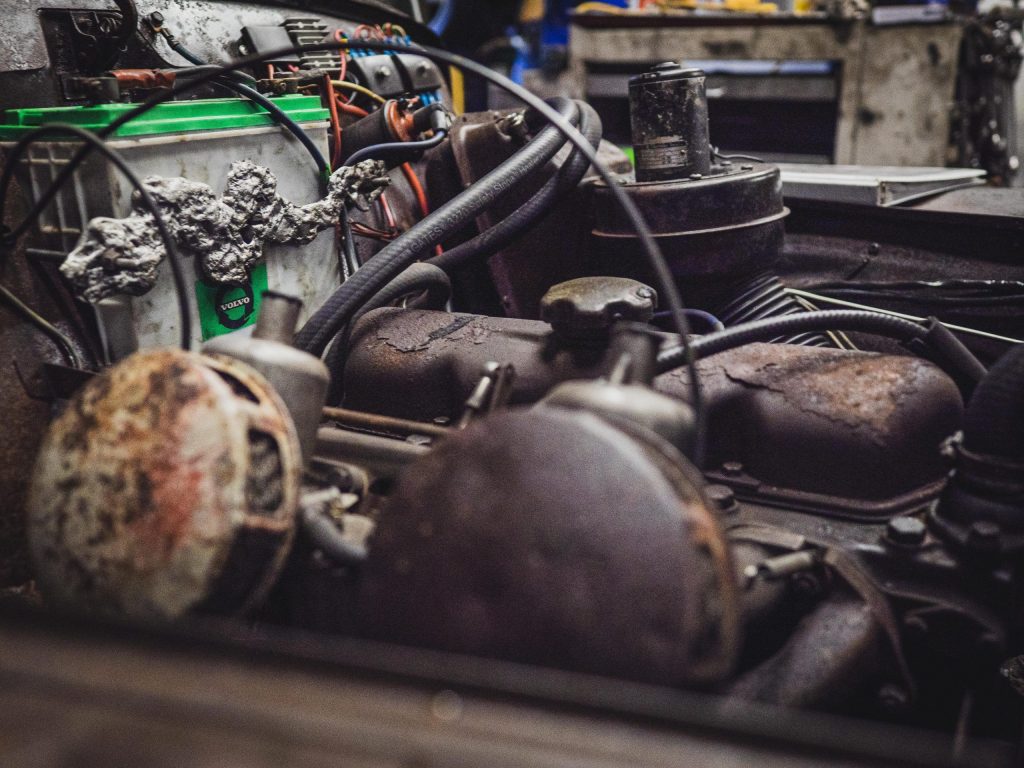
Haas’ own creativity is all over this car, too; the doors and roof are lined with a collage of California road maps, Volvo ads and brochure pages, vintage post cards, and 1960s fruit crate labels, all with a Paradise theme. “We weren’t going to get a cloth headliner back in here,” he says, “so this seemed like the next best thing.”
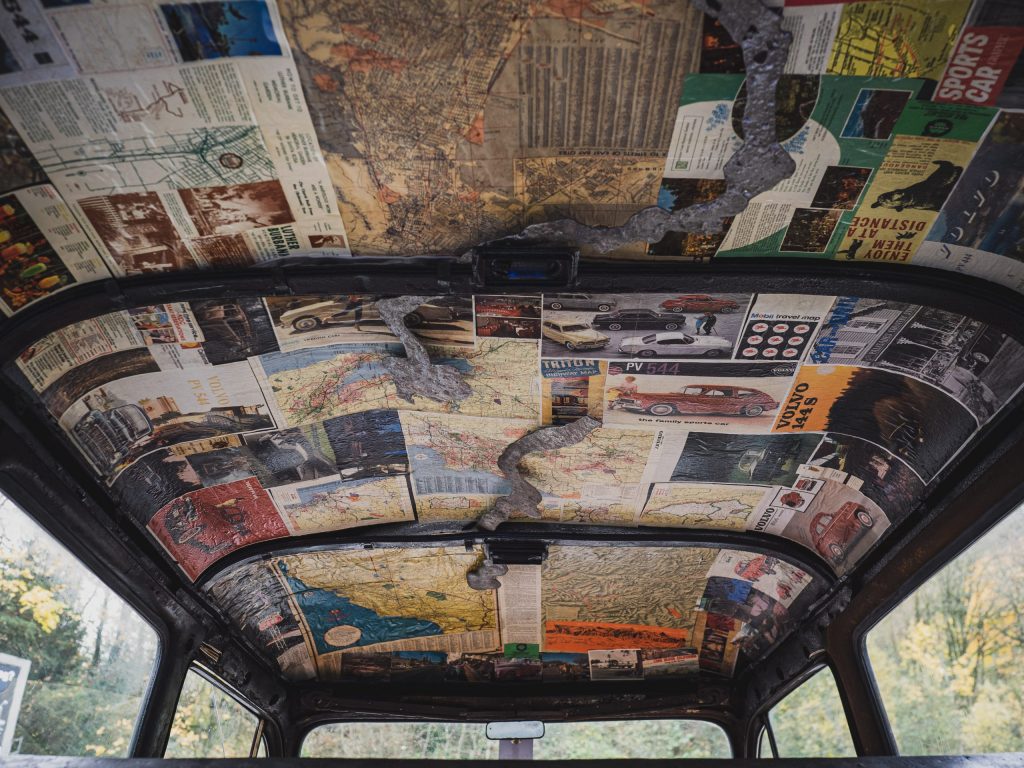
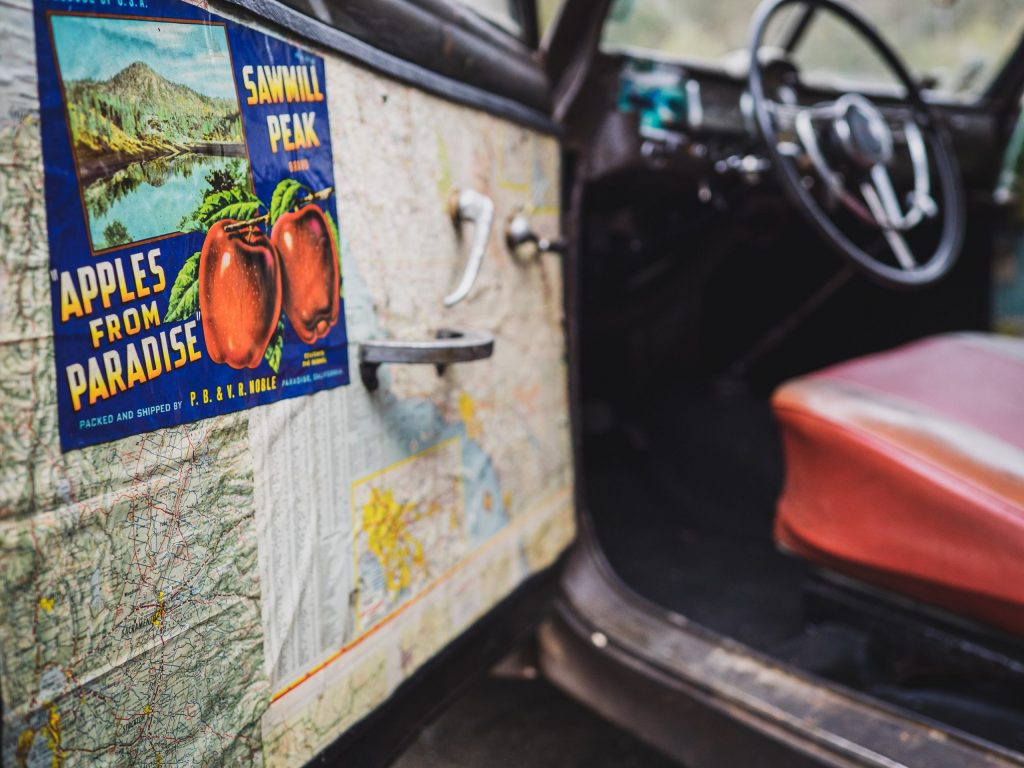
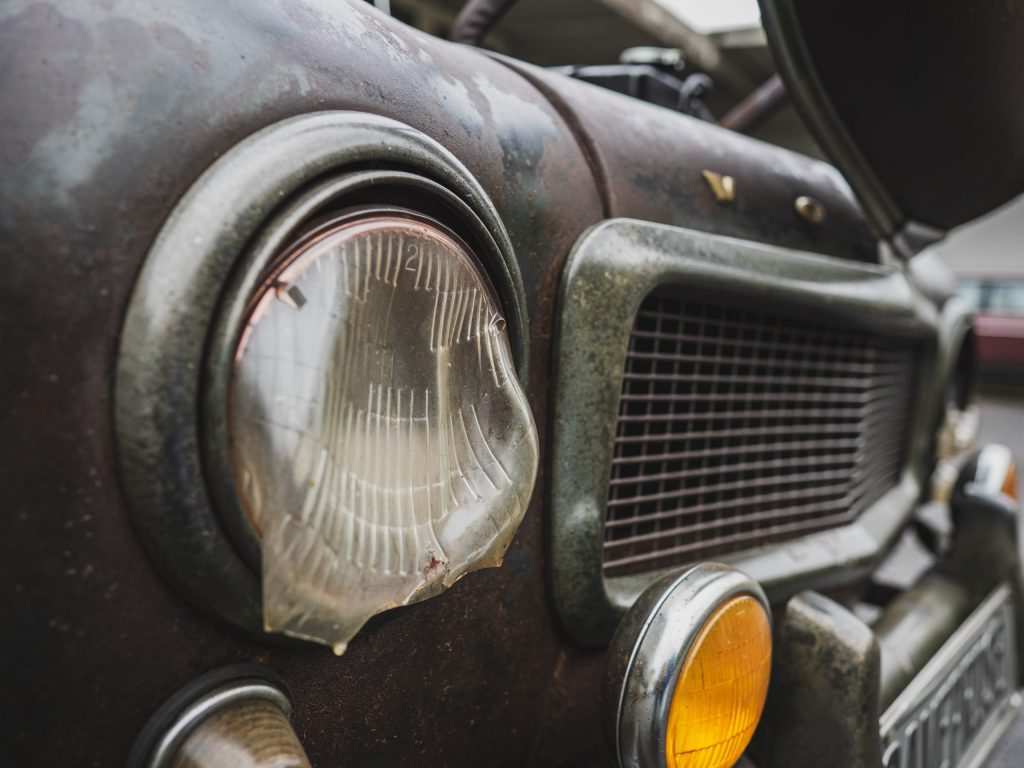
When he got the Volvo to the stage that it was a reliable running, driving, stopping, delicately preserved artifact, Haas felt like he was finished with it, so he called Pam Kirby to offer it back to her. “As a family we went around and round about it,” Kirby says. “But none of us were at a place in our lives to do anything with it. It might just sit in a garage, but no one would see it or enjoy it.”
Haas ultimately decided to put the car on eBay, with proceeds to benefit the American Red Cross disaster relief fund. Before that, however, he needed to take this special old Duett on a road trip.
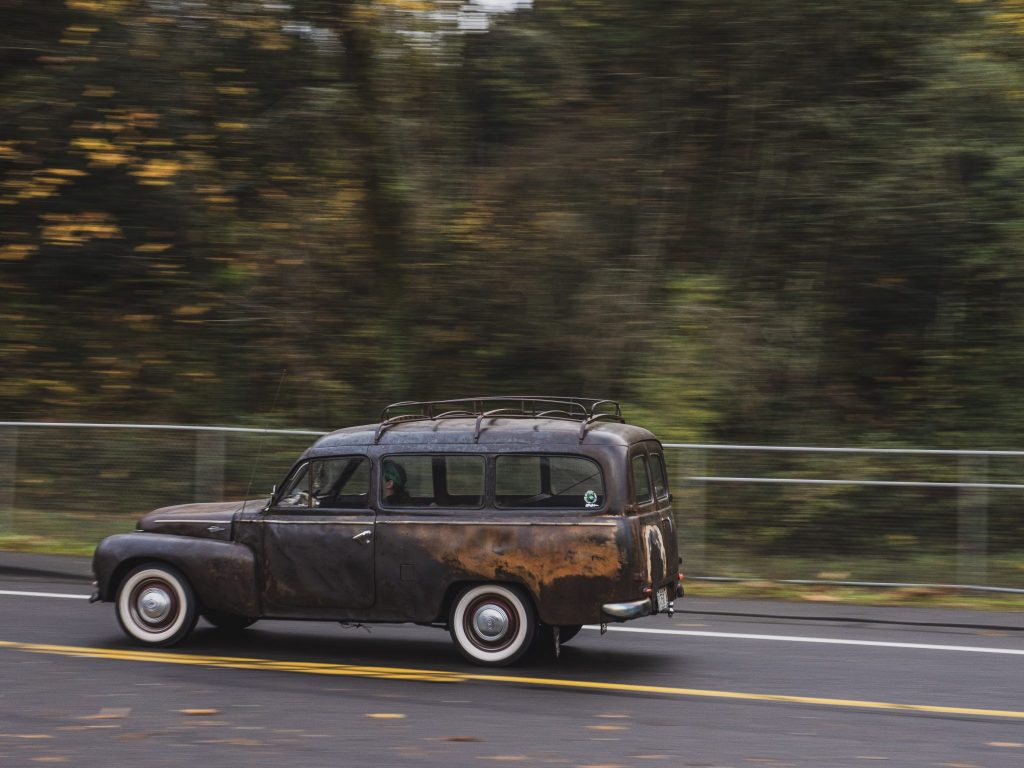
He set out from Portland on 7 November and the next day, exactly two years after the Camp Fire ravaged more than 150,000 acres, nearly 19,000 buildings, and one 1957 Volvo PV445, he arrived in Paradise to meet Pam Kirby and her family and reunite them with the car they all loved. “It was such a remarkable feeling,” Haas says. “Next to holding my son for the first time, I’ve never experienced something so powerful.”
Pam Kirby agrees. “That car was my dad’s love. I felt like he was smiling at us, that he knew we did the right thing by saving it.” Despite all the seat time she’d had in the Volvo Duett over the years, Kirby decided against driving it one last time. “It was too emotional. It was so neat just to sit in it and turn the engine over, so I sat in there by myself and revved it, and that was enough.”
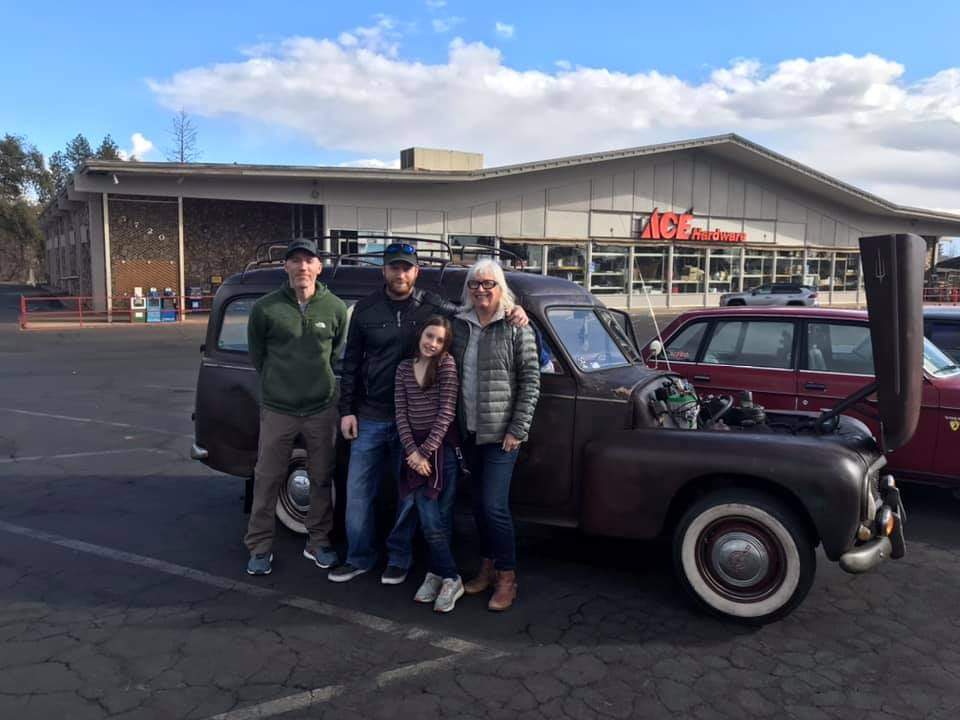
Haas made the auction listing live that day, a condition of the sale being first right of refusal to Pam Kirby should the buyer ever decide to sell it. By the virtual gavel drop on November 18, fourteen bidders had taken the Duett to $7200 (£5400). In Portland, Nick Haas cheered on the last-minute bidding frenzy from one of the bays of his garage. In Sacramento, Pam Kirby did the same from her mother’s hospital bedside.
“I’m so happy that it’s going to someone who will love it,” Kirby says. “As a family that was our big concern. We never wanted it to just go to junk.”
For Haas, parting with Lee Pearce’s Volvo, and this chapter of his life, is bittersweet. “I’ll never build another car like this,” he says. “It’s the culmination of a lot of love and support from a community that cherishes these cars and which just wanted to see this thing live. Exponentially, this car is everything that is car culture: history, family, community, love. It makes me cry to think about it.”
Via Hagerty US
Volvo P1800 Cyan review: It doesn’t get much better than this
















Wonderfully written story – ditto the restoration story accompanying it. Thank you Hagerty for such engagingly written and emotive stories: who would have thunk a classic car website would dampen an eye or two?
Wonderful story about the volvo duett. I grew up with a 60’s amazon estate & eventually got it from my dad. Wish I’d kept it! I would have bid for that Deutt if I’d known!
Great joob you have done.I my self have restord a pv445ds. from 1955.That was so rusty. that enione has giving up.But its a ds model. and only a few left. of that model